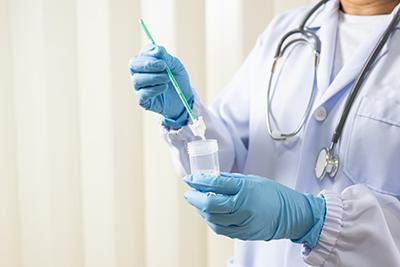Welcome back to part two of our series on primary HPV testing in cervical cancer screening. In this blog, we will focus on the various FDA-approved Human Papillomavirus (HPV) assays available in the U.S.
Human Papillomavirus and Cervical Cancer
HPV is ubiquitous and characterized by its non-enveloped structure and double-stranded DNA genome. It encodes a suite of regulatory (E1, E2, E5, E6, and E7) and structural proteins (L1 and L2), targeting the mucocutaneous epithelium for viral replication. Notably, the virus permits unchecked cellular proliferation and accumulation of genetic anomalies, creating a potential avenue for malignant transformations.
HPV’s prevalence is alarming; with an estimated 80% of women are likely to experience an HPV infection during their lifetime. Fortunately, approximately 90% of these infections resolve spontaneously within a year. Yet, it is the persistent infection with high-risk HPV types that pose the actual risk for invasive cancer development.
High-risk and low-risk HPV types
Among the 40 types that can infect the anogenital tract, 13 are classified as high-risk (hr), such as 16, 18, 31, 33 and 45. Particularly, HPV 16 and 18 are accountable for 60% and 10% of invasive cervical cancers, respectively. On the other hand, low-risk (lr) types like HPV 6 and 11 are commonly linked to benign conditions, like anogenital warts. Recognizing the varying HPV types and their associated risks is pivotal for designing an efficacious cervical cancer screening program.
A Primer on HPV Assays
HPV testing methodologies are crucial for the effective deployment of HPV-based screening. Most of the HPV assays are engineered to detect DNA of specific high-risk HPV types. Various technologies, such as direct genomic detection or polymerase chain reaction (PCR) amplification, are deployed for this purpose.
HPV genotyping is indispensable for identifying individual viral types, especially HPV 16 and 18, which help pinpoint the women at maximum risk. Beyond DNA-based tests, assays that measure HPV mRNA levels, specifically targeting the E6 and E7 mRNA, serving as markers of viral integration.
Current FDA approved HPV testing
Since the late 1990s, the FDA has greenlighted a number of HPV assays, each with unique advantages and limitations that shape their clinical utility. From Hybrid Capture 2 to Cobas 4800, these assays offer different methodologies and applications essential for patient management. Test results are universally rendered as either positive or negative for high-risk HPV (hrHPV), carrying largely similar implications for clinical care.
- Hybrid Capture 2 (HC2) (Qiagen, Germantown, MD):
- FDA-approved since 1997 for triaging women with minimal cervical abnormalities.
- Utilizes nucleic acid hybridization assay and signal amplification to detect 13 hrHPV types.
- Limitations include cross-reactivity with many lrHPV types and the absence of an internal control, which may result in false negatives.
- Cervista (Hologic, Marlborough, MA):
- FDA-approved since 2009.
- Employs signal amplification for the detection of 14 hrHPV types but cannot specify which types are present.
- Cobas 4800 (Roche, Basel, Switzerland):
- Employs PCR and nucleic acid hybridization to detect 14 hrHPV types and allows for genotyping of HPV 16 and 18.
- Approved for both major liquid-based cytologic preparations and for primary HPV testing since 2014.
- Aptima (Hologic):
- FDA-approved since 2011 but only for ThinPrep liquid-based preparation.
- A nuclei acid amplification test detecting E6/E7 mRNA from 14 hr HPV types
- Onclarity (Becton Dickinson, Franklin Lakes, NJ):
- The most recent FDA-approved HPV assay.
- Uses RT-PCR and nucleic acid hybridization to detect 14 hrHPV types with extended genotyping capabilities.
- Approved for both major liquid-based cytologic preparations and for primary HPV testing since 2020.
In our forthcoming blog, we’ll explore the evolving role of HPV testing in cervical cancer screening. Stay tuned!

